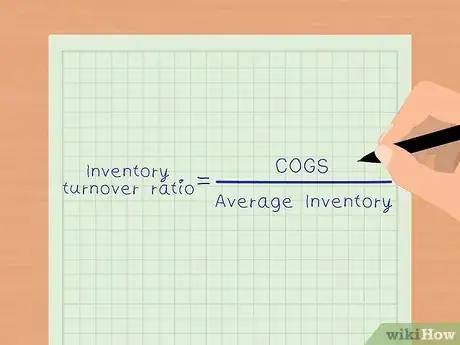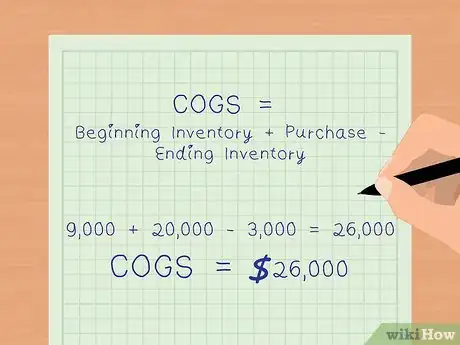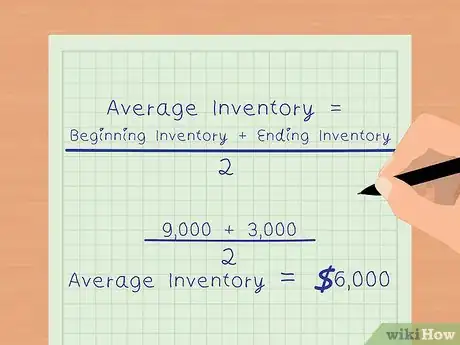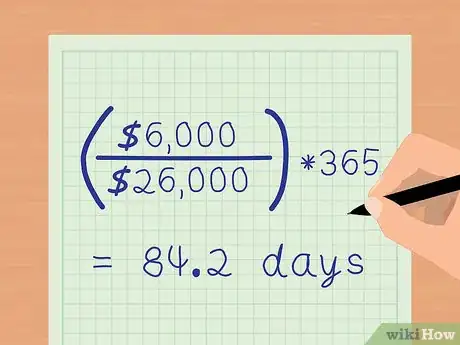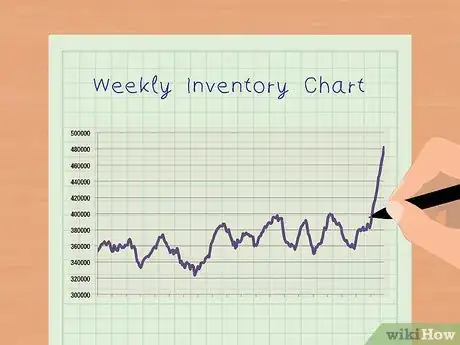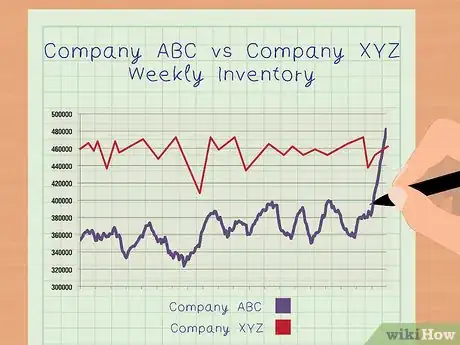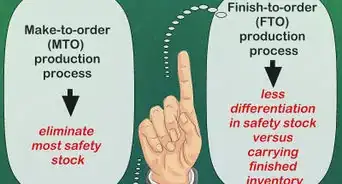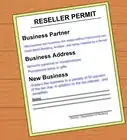This article was co-authored by Keila Hill-Trawick, CPA. Keila Hill-Trawick is a Certified Public Accountant (CPA) and owner at Little Fish Accounting, a CPA firm for small businesses in Washington, District of Columbia. With over 15 years of experience in accounting, Keila specializes in advising freelancers, solopreneurs, and small businesses in reaching their financial goals through tax preparation, financial accounting, bookkeeping, small business tax, financial advisory, and personal tax planning services. Keila spent over a decade in the government and private sector before founding Little Fish Accounting. She holds a BS in Accounting from Georgia State University - J. Mack Robinson College of Business and an MBA from Mercer University - Stetson School of Business and Economics.
There are 8 references cited in this article, which can be found at the bottom of the page.
wikiHow marks an article as reader-approved once it receives enough positive feedback. This article received 13 testimonials and 89% of readers who voted found it helpful, earning it our reader-approved status.
This article has been viewed 689,073 times.
Finding the days in inventory for your business will show you the average number of days it takes to sell your inventory. The lower the number you calculate, the better return on your assets you're getting. If you're not sure where to start, don't worry! Calculating days in inventory is actually pretty straightforward, and we'll walk you through it step-by-step below.
Steps
Calculating Inventory Turnover Ratio
-
1Learn the definition of inventory turnover ratio. Inventory turnover means how many times a business sells and replaces its inventory in a given period of time. A low turnover rate indicates unproductive assets and lower profits. The company is holding on to too much excess inventory because it is not selling fast enough. A high turnover rate may be an indication of lost sales as products may be out of stock when a customer wants to buy them.[1]
- The components of the formula are cost of goods sold (COGS) and average inventory.
- The formula for calculating the inventory turnover ratio is .
- Inventory can also be calculated by dividing sales by inventory.[2]
-
2Determine the cost of goods sold. The cost of goods sold is the direct expense associated with providing a service or producing a product. For the service industry, cost of goods sold includes labor expenses, including wages, taxes and benefits. In retail or wholesale, the cost of goods sold is comprised of merchandise that was purchased from a manufacturer, plus the expenses associated with acquiring, storing, and displaying inventory items.[3]
- The cost of goods sold is recorded on the income statement. It is recorded as a deduction of revenue and determines the company’s gross margin.
- It is typically calculated with the formula
- For example, suppose in a 12 month period, a company has a beginning inventory of $9,000, $20,000 in purchases and an ending inventory of $3,000.
- Calculate the COGS with the formula .
- The COGS for that 12 month period is $26,000, and it would be recorded as an offset to revenue on the income statement.
Advertisement -
3Determine the average inventory. Average inventory is the median value of inventory within an accounting period.[4] The value of inventory may change significantly within an accounting period. Therefore, it makes sense to calculate the average inventory when comparing inventory to total sales or cost of goods sold. This calculation eliminates confusion from spikes in the inventory level.
- The formula for average inventory is .
- For example, suppose in a 12 month period, a company had a beginning inventory of $9,000 and an ending inventory of $3,000.
- Calculate the average inventory with the formula .
-
4Apply the formula to calculate the inventory turnover ratio. Once you know the COGS and the average inventory, you can calculate the inventory turnover ratio. Using the information from the above examples, in this 12 month period, the company had a COGS of $26,000 and an average inventory of $6,000. To calculate the inventory turnover ratio, you would divide the COGS by the average inventory.
- This company sold and replaced its inventory 4.33 times in the 12 month period.
Calculating Days in Inventory
-
1Learn the meaning of days in inventory. Once you know the inventory turnover ratio, you can use it to calculate the days in inventory. Days in inventory is the total number of days a company takes to sell its average inventory. It also determines the number of days for which the current average inventory will be sufficient. Companies use this metric to evaluate their efficiency in using their inventory.[5]
-
2Apply the formula to calculate days in inventory. You calculate the days in inventory by dividing the number of days in the period by the inventory turnover ratio. In the example used above, the inventory turnover ratio is 4.33. Since the accounting period was a 12 month period, the number of days in the period is 365.
- Calculate the days in inventory with the formula .
- It takes this company 84.2 days to sell its average inventory.
-
3Apply an alternate formula. If you have not calculated the inventory turnover ratio, you could simply use the cost of goods sold and the average inventory figures. You would divide the average inventory by the COGS. Then you would multiply that number by the number of days in the accounting period.[6]
- In the example used above, the average inventory is $6,000, the COGS is $26,000 and the number of days in the period is 365.
- Calculate the days in inventory with the formula
- You still get the same answer. It takes this company 84.2 days to sell its average inventory.
Analyzing Days in inventory
-
1Examine the cash conversion cycle. The cash conversion cycle measures the number of days it takes a company to convert its resources into cash flow.[7] Days in inventory is the first of three parts for this calculation. The second is the days sales outstanding, which is the number of days it takes the company to collect on accounts receivable. The third part is the days payable outstanding, which states how many days it takes the company to pay its accounts payable.[8]
- The cash conversion cycle follows cash as it is first turned into inventory and accounts payable, then into sales and accounts receivable, and finally back into cash again.[9]
- It measures the effectiveness of the company’s management. Having a quick cash conversion cycle shows that management has devised ways to reduce time wasted by the business by keeping items in inventory for a short time and getting payment for goods quickly. Doing both of these requires tightly managed and carefully planned systems.
-
2Evaluate inventory effectiveness. The number of days in inventory expresses how long a company holds on to its inventory. This clarifies how long a company’s cash is tied up in its inventory. The longer a company holds on to its inventory, the more chances it has of losing money on that investment. Items in inventory can become outdated or they can expire. Also, prices can fall, which devalues the inventory.[10]
- Holding inventory for a long period also educes return on investment, as excess capital is tied up in inventory during this time.
-
3Compare your company’s days in inventory with other businesses in the same industry. The number of days in inventory makes more sense as a measure of effectiveness if you compare it with that of other businesses in the same industry. Different kinds of businesses sell their inventory at different rates. Retailers who sell perishable items have a smaller number of days in inventory than a company that sells cars or furniture. Therefore, compare your days in inventory with other businesses in the same industry to determine if you are selling your inventory efficiently.[11]
- You can also compare your days in inventory with your own historical inventory days calculations. This will help you identify trends, positive or negative, that might be affecting your cash conversion cycle duration.
Expert Q&A
Did you know you can get expert answers for this article?
Unlock expert answers by supporting wikiHow
-
QuestionWhy is it bad to hold on to inventory?
 Keila Hill-Trawick, CPAKeila Hill-Trawick is a Certified Public Accountant (CPA) and owner at Little Fish Accounting, a CPA firm for small businesses in Washington, District of Columbia. With over 15 years of experience in accounting, Keila specializes in advising freelancers, solopreneurs, and small businesses in reaching their financial goals through tax preparation, financial accounting, bookkeeping, small business tax, financial advisory, and personal tax planning services. Keila spent over a decade in the government and private sector before founding Little Fish Accounting. She holds a BS in Accounting from Georgia State University - J. Mack Robinson College of Business and an MBA from Mercer University - Stetson School of Business and Economics.
Keila Hill-Trawick, CPAKeila Hill-Trawick is a Certified Public Accountant (CPA) and owner at Little Fish Accounting, a CPA firm for small businesses in Washington, District of Columbia. With over 15 years of experience in accounting, Keila specializes in advising freelancers, solopreneurs, and small businesses in reaching their financial goals through tax preparation, financial accounting, bookkeeping, small business tax, financial advisory, and personal tax planning services. Keila spent over a decade in the government and private sector before founding Little Fish Accounting. She holds a BS in Accounting from Georgia State University - J. Mack Robinson College of Business and an MBA from Mercer University - Stetson School of Business and Economics.
Certified Public Accountant
-
QuestionWhat does a high inventory turnover mean?
 Keila Hill-Trawick, CPAKeila Hill-Trawick is a Certified Public Accountant (CPA) and owner at Little Fish Accounting, a CPA firm for small businesses in Washington, District of Columbia. With over 15 years of experience in accounting, Keila specializes in advising freelancers, solopreneurs, and small businesses in reaching their financial goals through tax preparation, financial accounting, bookkeeping, small business tax, financial advisory, and personal tax planning services. Keila spent over a decade in the government and private sector before founding Little Fish Accounting. She holds a BS in Accounting from Georgia State University - J. Mack Robinson College of Business and an MBA from Mercer University - Stetson School of Business and Economics.
Keila Hill-Trawick, CPAKeila Hill-Trawick is a Certified Public Accountant (CPA) and owner at Little Fish Accounting, a CPA firm for small businesses in Washington, District of Columbia. With over 15 years of experience in accounting, Keila specializes in advising freelancers, solopreneurs, and small businesses in reaching their financial goals through tax preparation, financial accounting, bookkeeping, small business tax, financial advisory, and personal tax planning services. Keila spent over a decade in the government and private sector before founding Little Fish Accounting. She holds a BS in Accounting from Georgia State University - J. Mack Robinson College of Business and an MBA from Mercer University - Stetson School of Business and Economics.
Certified Public Accountant
References
- ↑ Keila Hill-Trawick, CPA. Certified Public Accountant. Expert Interview. 30 July 2020.
- ↑ http://www.investopedia.com/ask/answers/070914/how-do-i-calculate-inventory-turnover-ratio.asp
- ↑ http://www.accountingtools.com/definition-cost-of-goods-sold
- ↑ http://www.investopedia.com/terms/a/average-inventory.asp
- ↑ https://xplaind.com/548679/days-inventory-on-hand
- ↑ http://www.investopedia.com/ask/answers/070914/how-do-i-calculate-inventory-turnover-ratio.asp
- ↑ http://www.investopedia.com/terms/c/cashconversioncycle.asp
- ↑ http://www.investopedia.com/terms/d/dsi.asp
- ↑ http://www.investopedia.com/articles/06/cashconversioncycle.asp
- ↑ Keila Hill-Trawick, CPA. Certified Public Accountant. Expert Interview. 30 July 2020.
- ↑ http://www.investopedia.com/terms/d/dsi.asp
About This Article
To calculate days in inventory, find the inventory turnover rate by dividing the cost of goods sold by the average inventory. Then, use the inventory rate to calculate the the days in inventory by dividing the number of days in the period by the previously calculated turnover rate. Alternatively, you can divide the average inventory by the cost of goods sold, and multiply by the number of days in the accounting period. For examples and tips on analyzing the days in inventory, read on!
